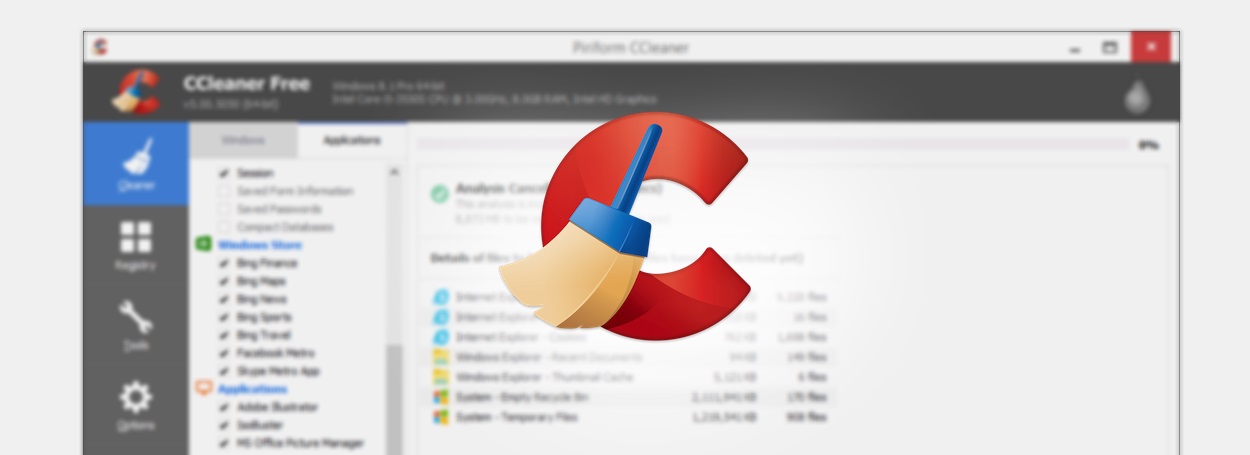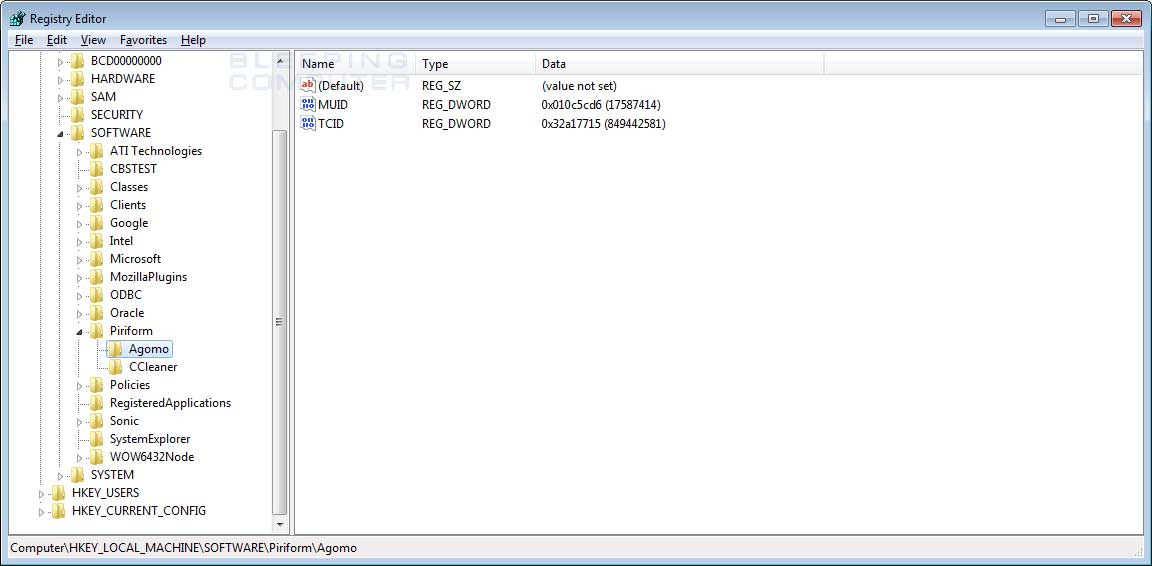
What happened?
An unknown threat group compromised the CCleaner infrastructure.
The attacker added malware to the 32-bit versions of CCleaner 5.33.6162 and CCleaner Cloud 1.07.3191.
The files were available for download between August 15 and September 12.
Who is affected?
Everybody who downloaded and installed the affected versions in that timespan.
Avast estimates the number of affected machines at 2.27 million.
How can I tell if I was infected?
When an infected version of CCleaner was installed it would have created a Windows Registry key located at HKEY_LOCAL_MACHINE\SOFTWARE\Piriform\Agomo. Under this key will be two data values named MUID and TCID, which are used by the installed Floxif infection.
 Registry key created by Compromised CCLeaner
Registry key created by Compromised CCLeanerYou can use Registry Editor to navigate to the Agomo key and see if it exists. If it does, then you are infected with this malware.
What does the Floxif malware do?
The malware — named Floxif — collects data from infected computers, such as computer name, a list of installed software, a list of running processes, MAC addresses for the first three network interfaces, and unique IDs to identify each computer in part.
The malware could also download and execute other malware, but Avast said it did not find evidence that attackers ever used this function.
How do I remove the Floxif or CCleaner Malware?
The malware was embedded in the CCleaner executable itself. Updating CCleaner to v5.34 removes the old executable and the malware. CCleaner does not have an auto-update system, so users must download and install CCleaner 5.34 manually.
Avast said it already pushed an update to CCleaner Cloud users, and they should be fine. The clean version is CCleaner Cloud 1.07.3214.
Anything else?
The malware executed only if the user was using an admin account. If you use a low-privileged account and installed CCleaner 5.33, you more not affected. If you are running Windows 7 Home Premium, then your main account is most likely an administrative account and you should assume you are infected if you had installed this version of CCleaner.
Nonetheless, it is recommended that you update to version 5.34.
Why didn’t antivirus software catch the infection?
The CCleaner binary that included the malware was signed using a valid digital certificate.

